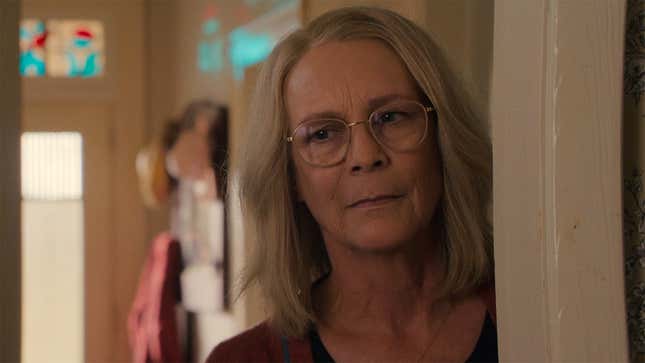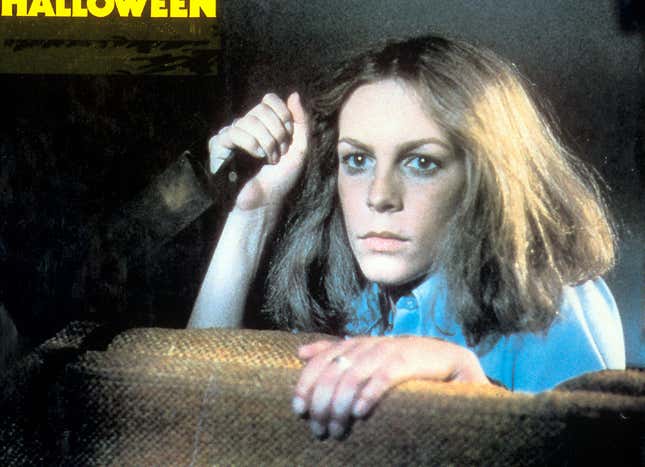I Reject This Baffling Ending to the ‘Halloween’ Franchise
This is Jamie Lee Curtis' supposed last time playing Laurie Strode, but her boogeyman deserved a better death than Halloween Ends.
EntertainmentMovies

Spoilers below.
We go into Halloween Ends knowing it will take something drastic for the movie to make good on its name. For 44 years, its central villain, Michael Myers, has proved unstoppable. Nothing has worked to exterminate him—not bullets, fires, electrocution, nor a beheading. This, of course, is the point: A franchise must continue if it is to make money, and no matter how socially conscious the Halloween movies attempt to be (particularly the most recent crop that began with the 2018 reboot Halloween and ends, supposedly, with Ends), they mostly exist to exist, as doing so has proven to turn a handsome profit on meager budgets.
We end up right where we start in Halloween Ends, and it’s where we’ve been for years. After the purported final confrontation between Michael and prototypical final girl Laurie Strode (Jamie Lee Curtis)—the kind of back-and-forth tussling that is designed to seem like it could go either way before going in exactly the way you know it will, with her victory and his demise—Laurie, with the help of her granddaughter Allyson (Andi Matichak) and the local police, parades Michael’s body through the town of Haddonfield to show its residents that their nightmare is over. The procession ends at a salvage yard, where Michael’s body is placed in a metal grinder to, theoretically, prevent any possibility of his reanimation. And all that is required is some industrial-grade machinery. Nice!
It takes about 90 minutes for the movie to get where it’s going. The final showdown between Laurie and Michael lasts about 10 minutes, and the denouement runs for about another 10. What precedes it is one of the most baffling shaggy dog stories in a horror franchise since Friday the 13th: A New Beginning—the one that doesn’t actually feature Jason Voorhees, that franchise’s monster.
-

-

-

-

-

-

-

-

-

-

-

-

-

-

-

-

-

-

-

-

-

-

-

-

-

-

-

-

-

-

-

-

-

-

-

-

-

-

-

-









































